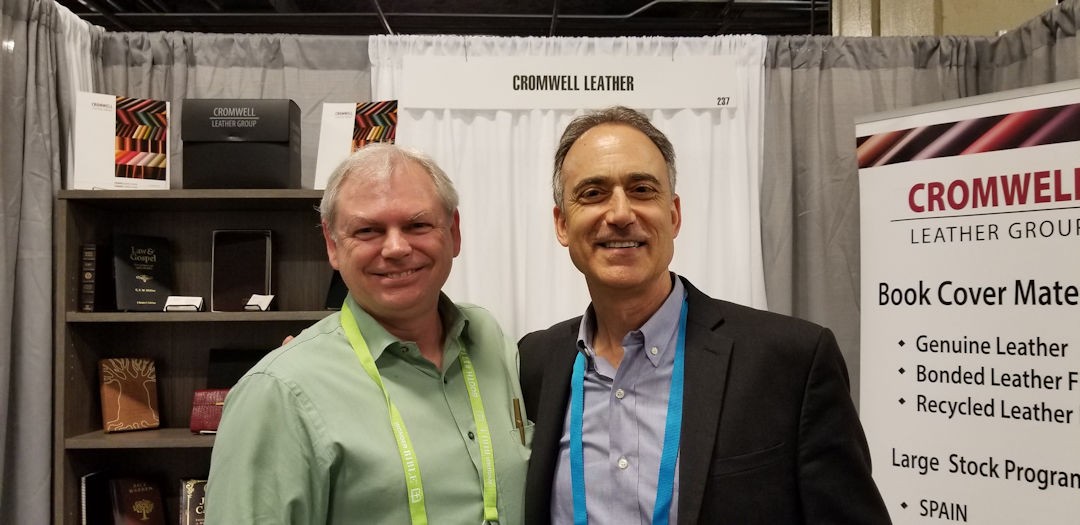It was a blessing to talk to Tom and Margaret of Cromwell Leather at UNITE 2018. Tom tells us what makes Bible leather different from any other leather. Bible leather has to endure for at least one generation and many times we expect it to last for multiple generations so we can hand our Bibles down to our children. This includes choosing the right animal, tannage, surface treatment so that it will reject soiling and accept foil stamping and adhesive. You can see the video at the bottom of this post.
Two Types of Cowhide
Tom also discusses genuine leather, bonded leather, and bonded leather fiber. He tells us about cowhide and why it’s a great choice for Bibles and how it compares to sheepskin and goatskin. He shows a natural grain (that’s created through a tumbling process) and an embossed grain so publishers can choose a leather with variation or a leather that’s completely uniform. The natural leather is full-grain and the embossed leather is top grain.
Tom and Margaret demonstrate how certain grains come from specific locations on the cow. I get to use a frame and see all the different places the leather can come from and what the Bible would look like if the leather was chosen from those locations.
I asked Tom about treating leather. He describes that the best treatment for Bible leather is to use it. The oils in our hands are the best oils and we shouldn’t use leather treatments on Bibles.
Two Types of Bonded Leather
Tom and Margaret also demonstrate their bonded leather, which has 50% more leather fiber than anyone else’s bonded leather for Bibles. Where their genuine leather will last generations, their bonded leather will last about one generation (which is excellent for bonded leather). Their bonded leather is made from the split of their cowhide (the fibers that are cut away from the cowhide when it’s made thinner).
Tom also discusses a new bonded leather called ReNatura, which is a non-coated bonded leather that comes in several colors. Bibles can have designs laser-etched into the ReNatura covers.
Tom makes a great point about names used for leather. Many have used names that can be confusing, or even deceptive, and make people think they’re buying something they’re not. We have a responsibility to be clear and let reader’s know what they’re getting.
You can learn more about Cromwell Leather at CromwellGroup.com.













Recent Comments